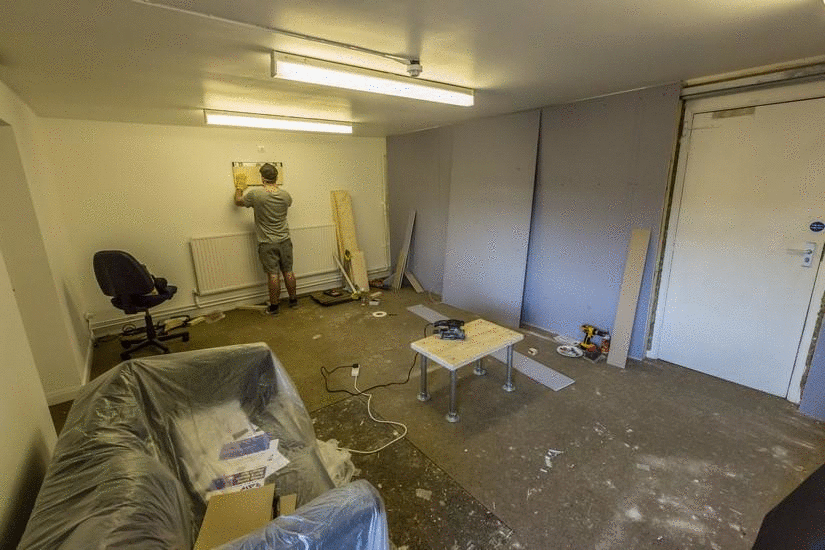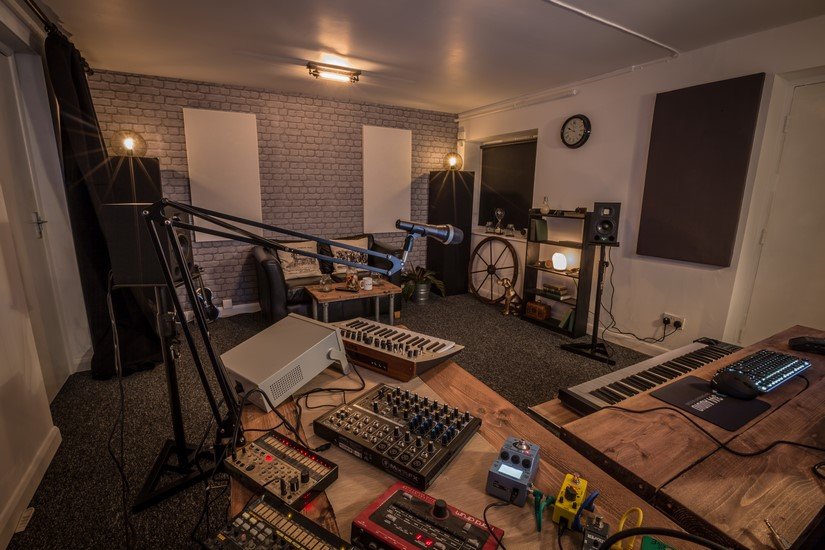Thinking about rebuilding your studio? Here are some questions to consider before you start: First of all, you need to ask yourself why building a dedicated studio space is right for your creative business. Will it help you accomplish a goal or work with new clients? Will it allow you to provide a better service?
You will then need to consider your budget. Is your budget realistic? Have you built an itemised breakdown? Where can you save money?
Next will come your plans for building soundproofing, acoustic treatment, interior design and equipment. Will these add value? Can you do the building yourself? Do you really need the best piece of equipment on the market?

Once you have figured out the basics and accepted that you want to go on this journey, you will need a marketing strategy to promote your studio in a way that attracts the clients you want to work with there.
You will have to ensure you are ready to take such a big step for your business, in terms of time and financial investment
The number of people working in your facility will also factor into your planning, does your premises have enough space?
With all this considered you will have to ensure you are ready to take such a big step for your business, in terms of time and financial investment.
Rebuilding The 344 Audio Studio: The Planning

The reason we wanted to rebuild our studio was to provide a better service to the clients we currently have and to the clients that we want. Previously, we worked from a home studio and rented facilities for larger projects, which was less comfortable for both us, Directors and other members of the sound team. Having your own studio allows you to choose the gear, workflow and look that is right for your business.
We had a budget of £20,000, which had to cover everything from rental deposits to equipment costs and soundproofing walls. We managed to save a lot of money by building soundproofing and acoustic treatment ourselves. We came in under budget, which left space for future investments in our second room. Every piece of equipment purchased was carefully planned to create an ecosystem that allows for a faster creative workflow and a high quality signal path throughout, while remaining cost conscious.
Having your own studio allows you to choose the gear, workflow and look that is right for your business
We hired a marketing agency to help us get into both local and national industry publications, which has already provided some excellent opportunities for the studio. We also have a list of current clients to invite to the new facility and a list of clients that we would like to work with in the future who we will be contacting.
With a view for expansion, we have an additional room which will house interns and freelancers to help when working on larger projects. We have a financial plan to allow for a return on investment and aim to get the most out of the equipment we have purchased and the room that we have built.
Rebuilding The 344 Audio Studio: The Execution

The construction process was by far the most difficult and time consuming part of the project. Soundproofing involved first of all, four days of research to discover the right methods and materials to use. Once we had established our battle plan, it was time to begin.
We hired a builder to construct the wooden batons that lay the foundation for our soundproofing stud walls. They had to be built with an air gap between themselves and the original walls. We then added Rockwool acoustic insulation slabs, which aided in sound absorption and helped fill the gap between the batons. After this, we fitted resilient bars which separate the next layer from the wood batons, as well as allowing the wall to flex and absorb longer wavelengths provided by the LFE speaker in the room.
The wall was very successful in reducing disturbance to us and neighbouring businesses
Finally, two layers of acoustic plasterboard were fitted to the resilient bars and painted to match the room colours. The wall was very successful in reducing disturbance to us and neighbouring businesses. There was still a quite severe noise leakage problem from the entrance, which had to be alleviated by constructing a double door followed by a heavy acoustic curtain.
Once the soundproofing steps had been completed, it was time to move on to interior design. From the beginning, we wanted to create an industrial revolution themed studio, which has cultural links to our home in Manchester, England. We went for neutral colours in the wall paint, absorbers / bass traps material and shelving to allow more specific elements to stand out. We also built our own studio furniture to save costs and create a more authentic industrial look. Using reclaimed wood boards, coach bolts and scaffolding poles, we constructed a fairly basic structure to build upon. Adding wood stain helped blend the furniture into the room a little better and bring out the natural wear of the desks.
We wanted to create an industrial revolution themed studio, which has cultural links to our home in Manchester, England
Next, we searched for various antiques to place in the room to finalise the look. These included a chest from the 1800s, various industrial cogs, classic British books to place on our bookshelves, and of course, a plant. It was finally time to install our equipment…
One huge workflow element we wanted to implement was the use of four screens. We fitted two identical monitors, one for the Pro Tools edit window, one for sound effects searching and miscellaneous tasks. We also fitted a 58-inch TV for client video playback. Finally, we decided to choose the Slate Raven MTi2 for our studio mix controller, as it had the most features and forward thinking workflow in its price range, allowing for custom macros and a touchscreen workflow.
We also had to create a 5.1 mixing environment, which meant that we would need a suitable interface and monitoring. We chose the Presonus Quantum for it’s low latency thunderbolt connectivity, ability to group outputs for up to 7.1 monitoring and it’s high quality digitally controlled preamps. We chose the HEDD Type 05 for satellites and ADAM Sub8 for our LFE. After testing one of our mixes on multiple systems, we found these to be the most transparent and comfortable to work with by far. They also have a phase and frequency linearization plugin for Pro Tools to help digitally align the speakers.
One of the other largely important tasks was to create a workstation PC that could handle our heavy Sound Design sessions. We got a custom 3XS system from Scan computers, which had all the bells and whistles needed to bring the studio build together. We spent most of our money on the key components, including the CPU and Motherboard, leaving room for future expansion on the 2 SSD drives and 32GB RAM.

The inclusion of a large MIDI keyboard, synthesizers and microphones were a crucial inclusion for creative purposes. We picked up a Korg Minilogue, mixer and guitar pedals for creating ominous drones and synthesized effects. Microphone-wise, we grabbed an NTG3 for Foley/ADR, an Aston Origin for Voice Overs and a Zoom H6 for recording sound effects, along with some contact mics and coil pickups. We also grabbed a dynamic mic for creating dialogue futz effects through the guitar pedals.
Finally, for acoustic treatment, we built 4 soffit bass traps to control low frequency build up in the room corners. These were made from thin timber wood uprights and particle board panels for the top and bottoms. The interiors were filled with acoustic rockwool. We then covered them with a breathable fabric. Our absorbers were a similar approach, with staples to attach the fabric tightly around the wood.
Rebuilding Your Studio: Tips and Shortcuts
Some of the lessons learned during the build process were invaluable, and we would love to share these with you. Most of all, the larger lesson here is that doing things yourself can garner much more worthwhile results, whereas hiring others can be overly expensive and may not save much time.
There has been no better time than now to build your own studio
Finding the right space from the beginning, in a good location with minimal traffic noise and disturbances will stand you in good stead for the future of your build and business operations.
Materials are cheap, and the internet is an unlimited resource for acoustic treatment advice, product reviews and the like. There has been no better time than now to build your own studio.

Another piece of advice to readers would be to make your studio unique to your business. We included an industrial revolution theme as it’s something that we and many others are fascinated with in our local history. Use that as inspiration for how your studio could stand out from the crowd.
One element that we really underestimated was the soundproofing, which all in all took about 2 weeks to complete and was incredibly stressful. If we could go back and do it again with the knowledge gained, the process could likely have been reduced to less than a week. Do your research well in advance, and be realistic about the results you can achieve.
Please feel free to get in touch with us if you want any specific advice on materials or the build process. You can get in touch via 344audio.com.
A big thanks to Alex Gregson for giving us a tour of their new facilities over at 344 Audio!








